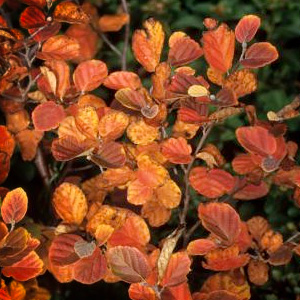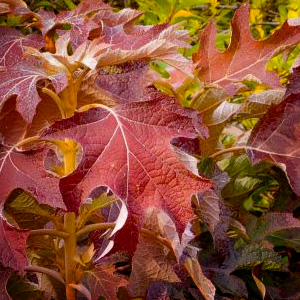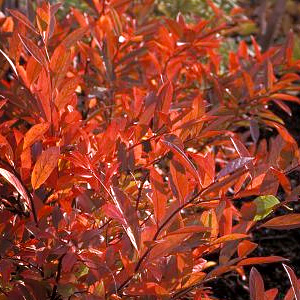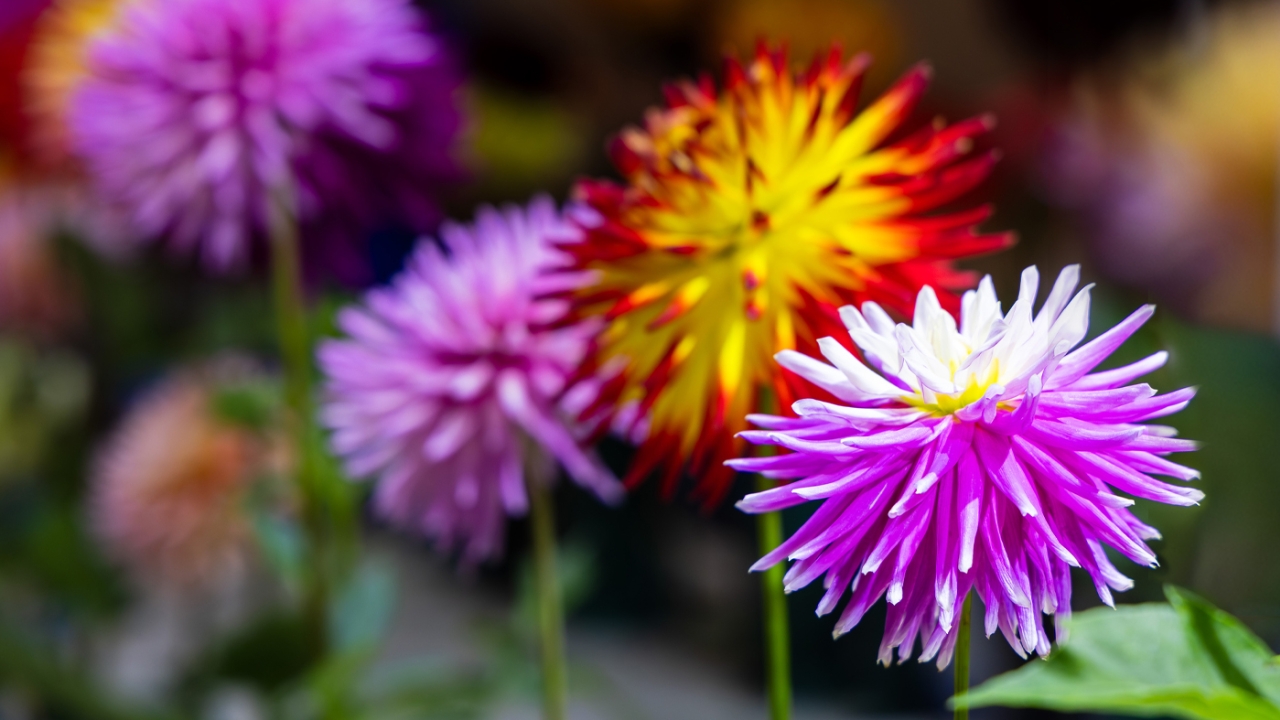

Smart Gardener
Shrubs with Great Fall Color
The air is brisk, the sun is at a lower angle in the sky, and the autumnal fireworks have begun.
Like spring, fall offers a splendid show of flowers and foliage, but with a twist. Sugar maple, oak, sassafras, magnolia, sweetgum, and redbud are just a few of the Garden’s trees cloaked with leaves that glow from pale yellow and gold to breathtaking brilliant red, purple, orange, and russet.
Ornamental peppers, asters, chrysanthemums, and tall grasses topped with delicate, feathery seedheads, offer autumnal eye candy as they signal a farewell to the growing season. Although annuals and perennials often steal the show in October, many shrubs create a delightful layer of dazzling colors as well. Viburnum, hydrangea, ninebark, and smokebush are examples of garden-worthy plants that look good from spring through fall.
Phil Douglas, curator of woody plants, shares six of his favorite shrubs for fall color.
Fothergilla xintermedia 'Mount Airy’
In early spring, this shrub produces a profusion of white, honey-scented flowers. By October, its bright fall foliage makes it an autumnal star. “These shrubs turn vibrant yellow, orange, red, and purple for lengthy periods during the fall,” Douglas says. Plant it in full sun to part shade in a spot with well-drained soil. It can serve as a single specimen plant or it can be massed together in a hedge or along a foundation or fence. It grows from 3 to 5 feet tall and its common name is dwarf fothergilla.
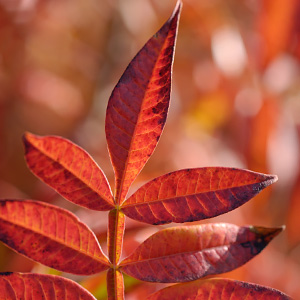
Rhus copallina 'Lanham's Purple’
Flameleaf and shining sumac are common names for this native, sun-loving plant. ‘Lanham’s Purple’ is a cultivar with rich burgundy-purple foliage that continues from spring right through the growing season. “The flameleaf sumac has excellent bright red fall color on its own, but the fade from purple to red is an improvement over the species,” Douglas says. It can reach 8 to 10 feet tall and becomes a wide suckering shrub (that spreads by underground stems), making it useful for naturalistic plantings.
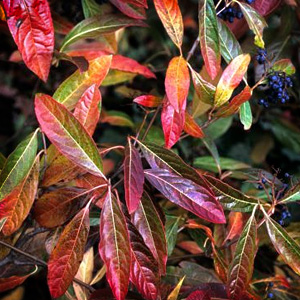
Viburnum nudum
Common names for this shrub include smooth witherod and possumhaw viburnum. In its native habitat in the eastern United States, it can be found growing in swamps. However, the shrub adapts to the home garden, where it can be grown in full sun to part shade. The plants make a good screen or hedge. “The deep maroon-red leaves are thick, glossy, and they maintain vibrant hues throughout fall,” Douglas says. The Garden has more than 100 different varieties of viburnum.
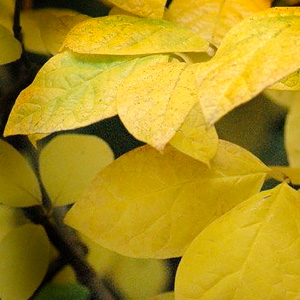
Calycanthus floridus
The common names for this plant—sweet shrub, allspice, and strawberry bush—are a nod to its fragrant spring flowers. Native to the southwestern United States, Calycanthus is extremely hardy. It can reach 6 to 10 feet in height and width. “This shrub’s beautiful, golden yellow leaves in fall are not overpowering, and they add a nice bit of color to the understory,” Douglas says. Besides the sweet-smelling flowers and the fall color, sweet shrub has the benefit of growing in full sun as well as full shade.
Hydrangea quercifolia
The oakleaf hydrangea is a somewhat underused shrub in home landscapes. That’s a shame because it offers four-season interest. Its white flowers turn a purple-pink in midsummer. It has great fall color and in winter, the peeling cinnamon-brown bark is showy. In fall, “Deep maroons, purples, and reds fade throughout these shrubs, providing excellent contrast against the spent flowers,” Douglas says. Plant it in light shade as a specimen plant alongside other shrubs.
Itea virginica 'Henry's Garnet'
In spring, sweetspire produces tiny, fragrant white flowers. When grown in full sun, it has fabulous fall foliage that lasts over a long period. It grows 3 to 4 feet tall and tolerates medium to wet soil. “This old standby cultivar provides excellent red to reddish-purple fall color as night temperatures decrease,” Douglas says. The shrub can form a dense colony over time.
Nina Koziol is a garden writer and horticulturist who lives and gardens in Palos Park, Illinois.


